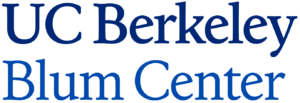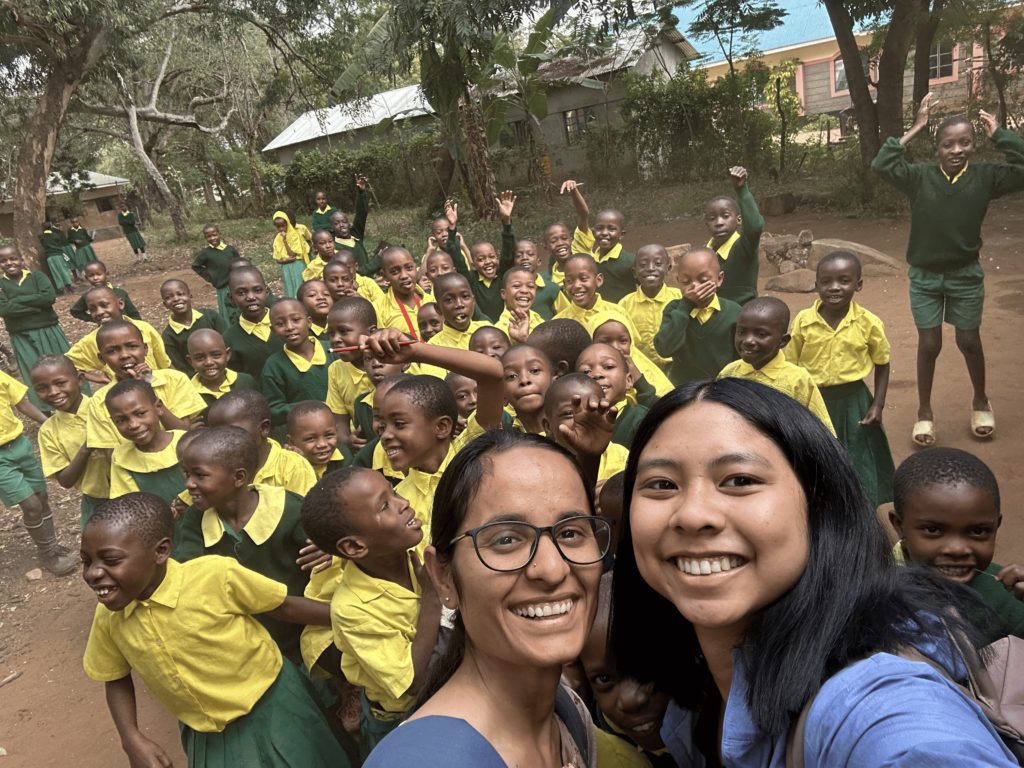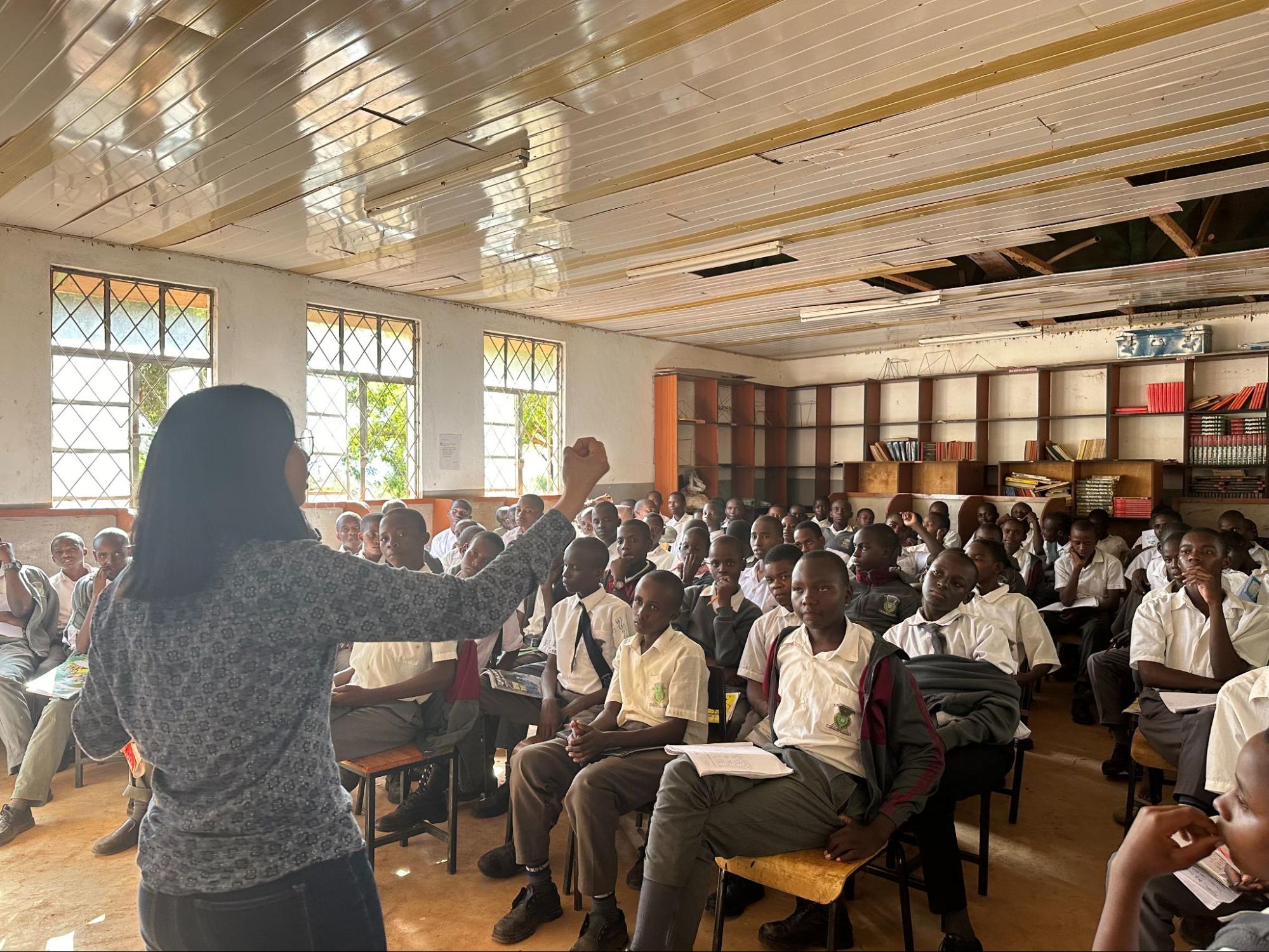By Tamara Straus
 James Bernard is senior director of global strategic partnerships for the education group at Microsoft, where his team builds multilateral partnerships in more than 130 countries. The core focus of these partnerships is ensuring that technology serves as an accelerator of effective school management, innovative teaching practice, and students’ acquisition of 21st-century skills. The Blum Center talked with Bernard in advance of his two-week fellowship supported by UC Berkeley’s Development Impact Lab.
James Bernard is senior director of global strategic partnerships for the education group at Microsoft, where his team builds multilateral partnerships in more than 130 countries. The core focus of these partnerships is ensuring that technology serves as an accelerator of effective school management, innovative teaching practice, and students’ acquisition of 21st-century skills. The Blum Center talked with Bernard in advance of his two-week fellowship supported by UC Berkeley’s Development Impact Lab.
What have been some of the takeaways from your time at Microsoft bringing technology to developing countries?
James Bernard: One of the key takeaways has been that there is no single answer to this question. There are so many local contexts that are relevant and so many stakeholders, that every situation needs to be approached differently. Nonetheless, I offer three key takeaways:
- Ensure that the government is included in and feels ownership of all technology decisions. At Microsoft, we see the government as a major stakeholder that needs buy-in and ownership to create long-term sustainable change. But to be successful, the public sector needs the help of many other players, including civil society, the private sector, donors, and other nongovernmental players. In education, many governments make the mistake of thinking that technology—and in particular, the devices they want to give students—will solve all the problems in their education systems. The reality is that technology is only a platform and will never be successful without the right supports, including teacher training, content and curriculum, and assessment of outcomes. Not to mention that the government also needs the necessary buy-in from stakeholders that might be against technology, such as teacher unions or parent-teacher groups. So we work with ministries of education to develop a long-term strategy to bring in the right technologies for the context of that country. We do this through a series of policy-level discussions facilitated by a third party like UNESCO or British Council, but led by the ministry of education, and involving all key stakeholders. This should lead to an ICT [information, communication and technology] strategy before the government goes to tender on devices, and will hopefully ensure that the right choices are made.
- Ensure that the right technology is being used in the right context and even whether technology is the right solution. Will it create more access or more of a divide between the haves and the have-nots in a community? Will it withstand the rigors or a harsh physical environment? Will people know how to use it? How does it get replaced? Can a mobile solution be used or is a laptop/tablet right?
- There is tremendous creativity and innovation happening on the ground in many developing countries. Don’t assume that something that worked in the West is going to work in Africa, or something that works in Africa will work in Latin America. Find local solutions to local problems, and local enterprises to solve those problems. M-Pesa would never have worked in the U.S., but it was timed perfectly for Africa. It is a great example of a locally created solution.
How can NGOs be most effective in promoting economic development in poor countries and regions?
James Bernard: NGOs have two things that many multinational, private sector organizations sometimes lack: credibility and reach. In many cases, these organizations have worked for years or decades in developing countries and have deep relationships with local communities and/or governments. They bring a credible, non-biased opinion that the government trusts. By partnering with such organizations, private sector companies—which often want the same outcomes as other stakeholders—can overcome the perception that they are simply vendors to the government. Second, NGOs have reach into local communities that the private sector will never have. For example, in Ghana, a country with a $38 billion GDP, Microsoft has two to three people in the country, covering all segments across the entire country. One of our NGO partners, Plan International, is active in 500+ communities in Ghana alone. NGOs may be mission-driven, but ultimately many see the investments of funding and human capital as a way to build a more productive society that will help alleviate poverty.
How can higher educational institutions like UC Berkeley advance international development goals?
James Bernard: Higher education institutions play a critical role, because they can provide research and development in the space that has been lacking in the past, particularly in the area of technology. Most technology companies are optimizing their R&D resources for markets where they see the greatest growth in the near- to mid-term. Unfortunately, this means many companies are focused on technologies that are relevant for the West. (I think, however, that there is great opportunity for market growth in technology is in developing countries, where most technology users are net-new versus in the West, where technology is essentially a renewal business.) NGOs don’t have R&D budgets for the most part—although a few, like PATH, do some R&D, but they are the exception not the norm. So universities can play a critical role in pushing change in development by working with both NGOs and private sector companies. Additionally, universities can provide agnostic research into successful strategies and implementations.
What are the biggest changes you have seen in the intersection of development, education, and technology during your career?
James Bernard: First, I see a greater willingness for different stakeholders to come together to solve some of the big issues facing education: ensuring students have access; driving a greater focus on student learning outcomes; ensuring teachers have time on task; keeping girls in school and out of dangerous situations. Additionally, we are seeing some critical technology trends that increase digital access:
- The evolution of the User Interface. Touch screens are now almost ubiquitous on most devices. This allows technology to be used in both online and tactile learning environments. Nothing can replace good teaching, but when teachers are supported by interesting content that takes advantage of the UI, magical things can happen. We are seeing many companies now reinventing what it means to serve educational content. For example, one company created an app that allows students to see a forest, drill into an individual tree, then a leaf, then the cell and the molecular structure of the leaf. They can spin the elements around, and can pull in data from other sources. It changes the way we perceive of educational content.
- The role of the device. Device form factors have changed drastically in the last 10 years. We now have more computing power in a mobile phone than many early mainframe computers had. In addition, the cost of devices has reduced significantly, to the point where it’ll soon be possible to have a high-end device for less than $100 a unit. The danger here is that governments begin to focus on the device rather than supporting it in the right ways. So it’s critical that funds, which would have been used for devices in the past, be used for content, assessment, and teacher training. No matter what, a device cannot replace a teacher, so teachers need to understand how to use devices as a part of their teaching practice.
- Universal access. It’s continuously getting easier for people to get online, even in some of the more remote areas of the world. More can be done with 3G and 4G wireless connections, and we’re seeing a number of new technologies becoming more ubiquitous, including TV White Spaces, which use unused TV band spectrum (essentially unused channels) to deliver long-range Wi-Fi that can cover up to 100 square kilometers, and does not require line-of-site access. We’re already piloting this technology in a number of countries, and believe that with effective cooperation among wireless providers, regulators, and other players, TV White Spaces can be a game changer in providing last-mile digital access. If we have better access, you can easily imagine kids living in a community without a fulltime teacher being able to learn from a trained teacher elsewhere using Skype.
- The move to the cloud. With greater access to high-speed connections, comes a greater opportunity for education systems to take advantage of cloud services. This unlocks a number of opportunities—from new ways to finance technology (reducing device costs through services models), to better collection and distribution of data, to providing richer, more individualized content for learners, based on where they are in their learning journey. Many of our partners are working on adaptive learning algorithms that allow teachers to identify where a student is, and the system will provide content based on their level of learning.
What areas are being overlooked in the intersection of development, education, and technology?
James Bernard: As I said earlier, too many education decision-makers still view the device as the answer. And this isn’t just a developing world problem. Look at what happened in LA last year with their iPad rollout. It’s a well-documented failure, because the devices were not well supported. Or the One Laptop Per Child program in Chile or Rwanda. These examples prove that if the devices aren’t supported with teacher training, content, assessment, etc., they will fail in education. In many parts of the world, school or system-wide policy does not account for technology’s role in driving 21st-century skills or student learning outcomes. A study we did in 2011 in seven countries (including developed and developing countries) showed that teachers who used innovative practice—allowing students to learn inside and outside the classroom, allowing students to learn at their own pace, and using appropriate technology—increased the acquisition of 21st-century skills that ultimately will make students more employable. But many schools don’t even allow students to use cell phones in class, and are geared more toward teaching methodologies that were relevant 100 years ago.
If you could make one magic technological fix in the world today, what would it be?
James Bernard: Low-cost solar base stations that could tap into the unused wireless spectrum, and regulations that support this kind of access. Access is the key to all other technologies being used effectively, and gives students the power to find the knowledge that we take for granted every day.
James Bernard will be speaking at a Development Impact Lab panel on “Tech Innovation and Partnerships for Education in Africa” on April 10, 2015, 3-5 pm. For more information and to RSVP, click here.




